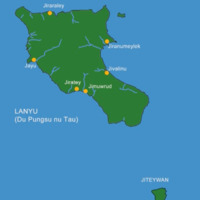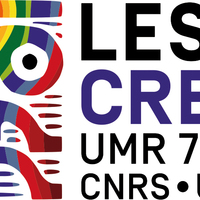Deprecated: strpos(): Passing null to parameter #1 ($haystack) of type string is deprecated in /var/www/html/themes/BBCFoundation/view/omeka/site/item/show.phtml on line 31
Deprecated: strpos(): Passing null to parameter #1 ($haystack) of type string is deprecated in /var/www/html/themes/BBCFoundation/view/omeka/site/item/show.phtml on line 45
Fin de la cérémonie de lancement de la grande pirogue du lignage Du-Village - Premiers essais du bateau qui est poussé à la mer - échanges entre les anciens assis sur le rivage - sacrifice de poulet de Sian-Dezdezen - sacrifice d'une chèvre du couple
Field recordings collected in Lan Yu Island (Taïwan), Yami population, by V. Arnaud in 1975.
- Edited Title
- Archivist's Original Title
- Original description
- Time duration
- Recording date of the original material
- Acquisition Date
- Population
- Place of the cultural origin
- Country Name
- Recording place
- Resource Language
- Comment
- Archivist Category
- Recording context
- Collector
- Name of original Collection
- Collection source citation
- Related material
- History of ownership
- Holding Institution of Original Materials
- Licensing Institution
- Accessing Institutions
- Copyright Information
- Copyright Notice
- Physical format
- Preservation State of Physical Object
- Original item number
- SEAH Identifier
-
en
saoden rana o avat no cinedkeran - meykarosan a mangid - avavangen - igoan o manok do vanoa a raralaen do racid no cinedkeran - manganiaw no cinedkeran do mahep -
-
fr
Fin de la cérémonie de lancement de la grande pirogue du lignage Du-Village - Premiers essais du bateau qui est poussé à la mer - échanges entre les anciens assis sur le rivage - sacrifice de poulet de Sian-Dezdezen - sacrifice d'une chèvre du couple
-
en
End of the launching ceremony of the large dugout canoe of the Du-Village lineage - First tests of the boat which is pushed into the sea - exchanges between the elders sitting on the shore - sacrifice of chicken from Sian-Dezdezen - sacrifice of a goat from couple
-
en
Field recordings collected in Lan Yu Island (Taïwan), Yami population, by V. Arnaud in 1975.
-
en
00:27:22
-
en
1975-08-24
-
en
2012
-
en
Yami
-
en
Jiraraley village; Lan Yu Island
-
en
Yami (Tao)
-
en
InCopyright and/or related rights. URI: https://rightsstatements.org/page/InC/1.0/
For more information on the rights, please see the corpus record : https://archives.crem-cnrs.fr/archives/corpus/CNRSMH_Arnaud_001/
-
fr
Le bateau, porté à bout de bras, est amené sur le port en bord de mer. Il est très beau et très léger et on veut le faire admirer aux gens du village et à ceux des autres villages. Tous, les jeunes comme les vieux, veulent lancer le bateau et le lancer encore mieux pour le faire admirer. C'est un bateau si extraordinaire qu'on l'aime dès qu'on le voit, et on "voudrait bien l'avoir pour soi". Après un rite d'aspersion d'eau de mer sur la proue du bateau afin qu'elle "reste à jamais droite, rapide et bien orientée", la pirogue est poussée à l'eau. Lorsque les hommes des autres villages la voient voguer sur les flots, ils la trouvent si belle, si droite et si rapide, qu'ils ne peuvent s'empêcher de sortir les armes pour l'attaquer. Comme à un ennemi, ils lui adressent des insultes et des gestes violents afin de lui "montrer leur force" eux aussi, de la combattre et d'essayer de la vaincre pour la ramener chez eux.
Tous les "invités de l'extérieur" (nikat a kadoan lili) attendent de voir comment fonctionne la grande pirogue afin d'en faire part de retour dans leur village. Les "premiers essais" (patahatahan) sont menés avec célérité. "Les avirons aussitôt liés avec des cordes dans leurs tolets" (saoden rana o avat no cinedkeran), le bateau est poussé à la mer. Après avoir fait un grand tour à titre de démonstration, les hommes reviennent en "ramant à grande vitesse et en chantant très fort au rythme de leurs avirons" (meyvaci = meykarosan a mangid). Après "l'essai du bateau" (avavangen), un rite propitiatoire est à nouveau effectué sur la "quille qui est enduite du sang d'un coq sacrifié sur le port" (igoan o manok do vanoa a raralaen do racid). Le chef de la pirogue adresse au bateau son invocation :
"Voici que je saigne un coq à ta quille, chère et honorée pirogue. Porte-toi bien et vis très longtemps, chère et honorée pirogue. Donne-nous aussi la chance de vivre très vieux et très longtemps, chère et honorée pirogue. Sache attraper du poisson, chère et honorée pirogue. Rapporte-nous de belles pêches de poissons volants, chère et honorée pirogue".
Le soir du lancement du bateau, alors que le groupe de pêche reste chanter dans la maison du barreur, deux hommes sortent en mer pour effectuer "la première pêche de la pirogue dans la nuit" (manganiaw no cinedkeran do mahep). Il s'agit d'offrir en prestation au nouveau bateau le "premier poissons pêché" qui a valeur d'augure.
-
en
The boat, carried at arm's length, is brought to the port by the sea. It is very beautiful and very light and we want to have it admired by the people of the village and those from other villages. Everyone, young and old, wants to launch the boat and launch it even better to have it admired. It's such an extraordinary boat that you love it as soon as you see it, and you "wish you had it for yourself". After a rite of sprinkling sea water on the bow of the boat so that it "remains forever straight, fast and well oriented", the canoe is pushed into the water. When the men of other villages see her sailing on the waves, they find her so beautiful, so straight and so fast, that they cannot help but take out their weapons to attack her. As if to an enemy, they address her with insults and violent gestures in order to “show their strength” too, to fight her and try to defeat her to bring her home. All the “guests from outside” (nikat a kadoan lili) wait to see how the big canoe works in order to report back to their village. The “first tests” (patahatahan) are carried out quickly. "The oars immediately tied with ropes in their oars" (saoden rana o avat no cinedkeran), the boat is pushed into the sea. After having made a grand tour as a demonstration, the men return by "rowing at high speed and singing very loudly to the rhythm of their oars" (meyvaci = meykarosan a mangid). After "testing the boat" (avavangen), a propitiatory rite is again performed on the "keel which is coated with the blood of a rooster sacrificed in the port" (igoan o manok do vanoa a raralaen do racid). The leader of the canoe addresses his invocation to the boat: "Here I am bleeding a rooster from your keel, dear and honored canoe. Be well and live very long, dear and honored canoe. Also give us the chance to live very old and very long, dear and honored canoe. Know how to catch fish, dear and honored canoe. Bring us beautiful catches of flying fish, dear and honored canoe". On the evening of the boat's launch, while the fishing group remains singing in the coxswain's house, two men go out to sea to carry out "the canoe's first catch of the night" (manganiaw no cinedkeran do mahep). This involves offering the new boat the “first fish caught” which has an auspicious value.
-
en
Music and spoken voice
-
en
Field recording
-
en
Taiwan (Lan Yu), population Yami (actuels Tao), V. Arnaud expedition, 1975.
-
en
Recordings digitized by R. Saint Estève, archived at CREM (CNRS) between 2012 and 2020, indexation and annotation by V. Arnaud.
-
In Copyright. Non-Commercial Use Permitted
-
For any use, please contact the CREM-LESC (CNRS, Nanterre University, France): crem.lesc[at]cnrs.fr ; See information at https://archives.crem-cnrs.fr
-
en
Magnetic tape
-
en
UHER magnétophone
-
en
CNRSMH_I_2013_012_015_001
-
en
SEAH_CNRSMH_I_2013_012_015_001
- Media





